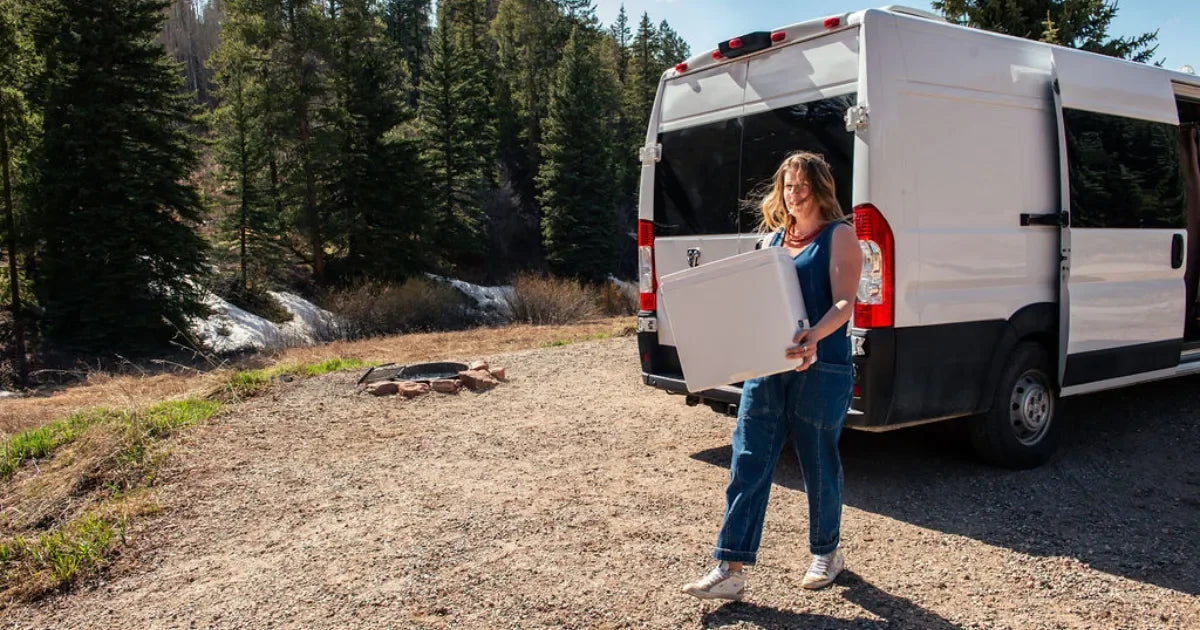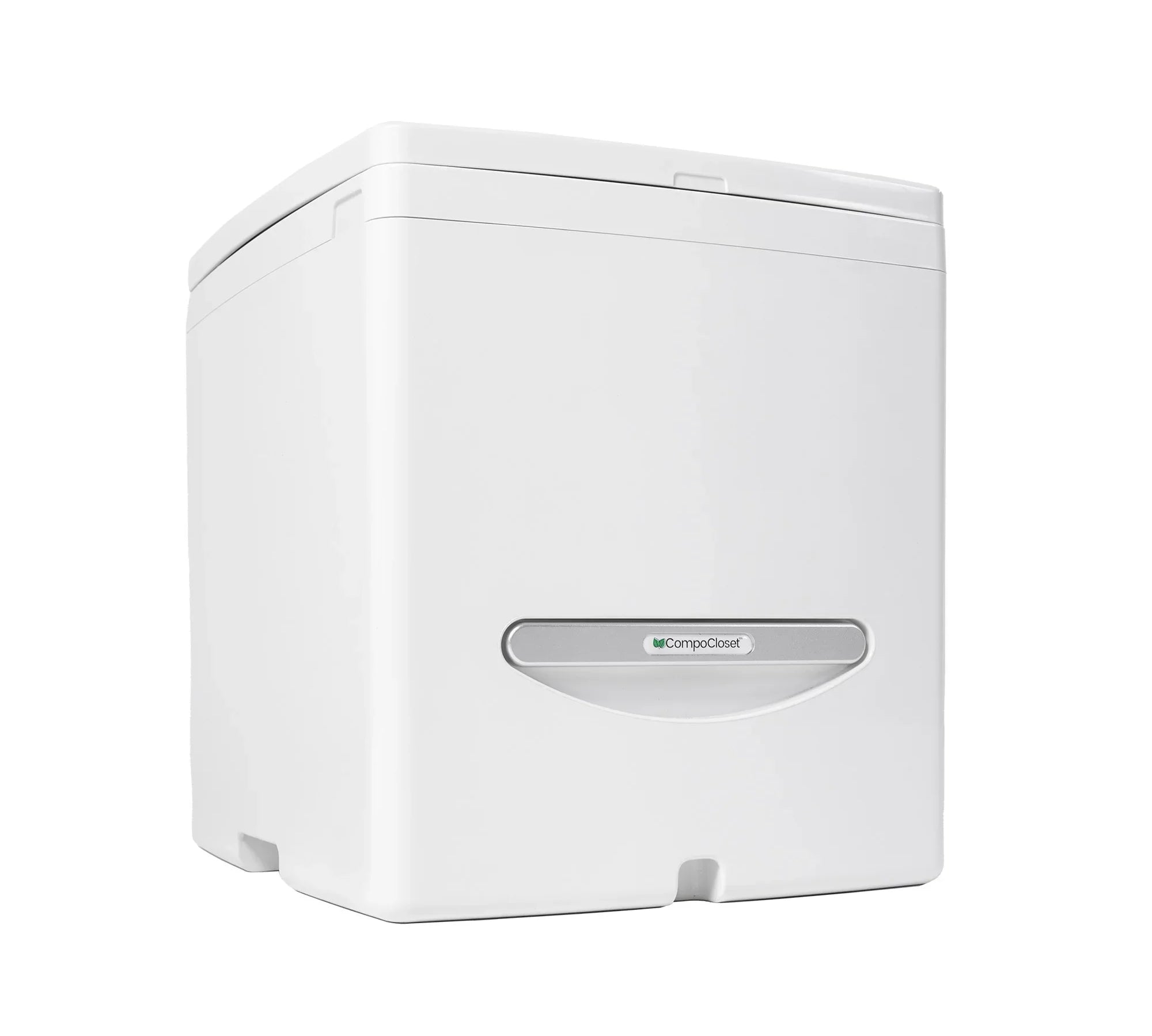When disaster strikes, having a reliable, hygienic, and easy-to-use emergency toilet solution can make a catastrophic event more manageable.
While many people think of clunky construction-site porta-potties or flimsy bucket toilets, modern portable toilets are far superior. Portable composting and dry flush toilets provide a clean, odor-free, and eco-friendly alternative to traditional portable options.
Let’s explore why a portable toilet is a must-have in case of a home emergency, along with some essential tips for preparedness, disposal, and long-term storage.
Portable Toilets in Emergencies: Tips for Real-World Events

In the face of home emergencies, such as natural disasters or plumbing failures, access to functional sanitation facilities can become a pressing concern. A portable, emergency toilet can offer a practical and immediate solution, ensuring hygiene and comfort during such challenging times.
Real-World Scenarios Where Emergency Toilets Save the Day
- Natural Disasters: Events like hurricanes, earthquakes, or floods can severely damage infrastructure, rendering traditional plumbing unusable. For instance, in Jefferson County, Washington State, the local authorities recommend the use of a twin-bucket toilet system during emergencies to manage waste safely when septic systems are compromised. Better yet, use a portable separating toilet to make an emergency situation easier to handle (and less smelly) since you only need one toilet instead of two buckets.
- Extended Power Outages: Power failures can disrupt water supply systems, especially in rural areas dependent on electric pumps. Without electricity, well pumps cease to function, leading to a lack of running water and, consequently, inoperable toilets. In such cases, portable toilets ensure that sanitary needs are met without relying on external utilities.
- Plumbing Failures: Unexpected issues like burst pipes or septic system malfunctions can make home bathrooms temporarily unusable. Having an emergency toilet on hand provides a convenient stopgap until repairs are completed.
Tips for Effective Use of Emergency Toilets During Disasters

- Preparation: It's advisable to include a portable toilet in your emergency preparedness kit. Options range from simple bucket systems to more advanced toilets that are more sanitary and easier to clean. Ensure you have necessary supplies like toilet paper, hand sanitizer, and waste disposal bags.
- Hygiene Maintenance: Regularly clean and disinfect the toilet to prevent the spread of pathogens. Use appropriate deodorizers and disinfectants, and always wash hands thoroughly after use.
- Waste Disposal: Follow local guidelines for the disposal of waste from the toilet. Some regions may have designated disposal sites or specific protocols, especially during widespread emergencies. Many municipalities provide detailed instructions on managing waste when standard sewage systems are unavailable. Check yours before an emergency strikes so you will know what the regulations are where you live.
- Consideration for Neighbors: If you're in a shared living environment or close-knit community, discuss sanitation plans with neighbors to ensure collective health and safety. Collaborative efforts can lead to shared resources and better overall preparedness.
Incorporating an emergency toilet into your disaster preparedness plan not only addresses immediate sanitary needs but also contributes to overall health and morale during challenging situations. Being prepared ensures that even when the unexpected occurs, you and your loved ones can maintain a semblance of normalcy and comfort.
Best Toilets for Emergency Preparedness

So now with all this talk about how important it is to have an emergency toilet on hand, what options do you have outside of bucket toilets? It’s no secret what our suggestions will be!
Composting options:
A composting toilet is a waterless, eco-friendly sanitation solution that naturally helps manage human waste through decomposition and evaporation. It works by separating liquids and solids, reducing odors and starting the breakdown process of organic matter. The solids are mixed with an organic composting medium (like coconut coir) to aid in aeration and microbial activity, while liquids are diverted into a separate container for easy disposal. Over time, the solids can be further composted in an appropriate outdoor setting, creating a sustainable and low-impact waste management system.
Benefits include:
- No water required.
- Can use a portable battery for power.
- Separates liquids and solids to control odor.
- Can be emptied responsibly after the emergency.
- Ideal for extended use during long-term outages.
→ Learn more about how composting toilets work.
Sealing options:
A sealing, or often called a dry flush toilet is a modern, hygienic solution that automatically seals waste into odor-proof, compostable, biodegradable, or recycled plastic bags, making disposal easy and mess-free. Separating models, like the S1 Dry Flush Sealing Toilet, work by separating liquids and solids, preventing odors and maintaining a clean environment without the need for water or plumbing. Each time it’s used, the waste is isolated in an airtight compartment, reducing exposure and ensuring sanitary disposal.
Benefits include:
- Automatically seals waste into odor-proof bags.
- Requires minimal maintenance: great for temporary emergencies.
- Simple, hygienic, and easy to dispose of when municipal services are restored.
Emergency Preparedness Tip: Store a toilet kit in your emergency supplies, including compostable bags, toilet paper, hand sanitizer, and a disposal plan.
Disposal Tips for Extenuating Circumstances

When regular waste disposal services are unavailable, it’s important to know how to handle humanure or sealed waste properly.
For Composting Emergency Toilets:
- Liquids: Empty the urine container every few days in an outdoor area away from water sources.
- Solids: Empty into a compostable bag and dispose of the bagged solids in household trash per local regulations. If you have a home composting pile or bin that is accessible, you can empty your solids there to let it continue the composting process (typically takes six -twelve months).
For Sealing Emergency Toilets:
- Liquids: This works the same as a composting toilet - simply empty your urine bottle in a discrete outdoor space away from water sources as needed.
- Solids: Sealed waste bags can be disposed of with regular household trash when no other options are available. Follow local regulations for bio-waste disposal if additional rules apply in your area.
Disposal Tip: Always check local regulations regarding human waste disposal, especially during emergencies.
Long-Term Storage Tips for Emergency Toilets
If you only plan to use your toilet for emergencies or occasional renovations, proper storage is key to keeping it in great condition.
- Empty and clean thoroughly before storing.
- Allow all components to dry completely to prevent mold or odors.
- Store in a cool, dry place, like a garage or utility closet.
- Keep accessories (like composting materials or sealing bags) nearby for easy access.
- Perform periodic checks to ensure everything is in working order for the next use.
Storage Tip: Store your emergency toilet in a protective bag or container to keep it dust-free and ready to go when needed.
Be Prepared With an Emergency Toilet
When you’re dealing with an unexpected emergency, having a toilet that doesn’t need water or power to operate can make life significantly easier.
Choosing the right toilet for your needs, whether you need a composting or sealing emergency toilet, ensures you stay clean, comfortable, and hygienic during any situation.
By investing in a portable emergency toilet before you need it, you’ll enjoy peace of mind knowing you’re prepared for anything life throws your way.





